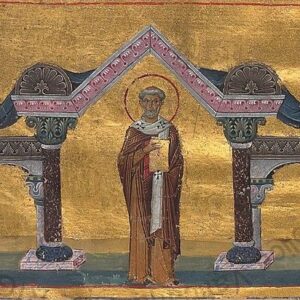 Today marks Church’s Memorial of the fifth-century Pope Saint Leo I, known as “St. Leo the Great,” whose involvement in the Fourth Ecumenical Council helped prevent the spread of error on Christ’s divine and human natures. St. Leo intervened for the safety of the Church, as well, persuading Attila the Hun to turn back from Rome!
Today marks Church’s Memorial of the fifth-century Pope Saint Leo I, known as “St. Leo the Great,” whose involvement in the Fourth Ecumenical Council helped prevent the spread of error on Christ’s divine and human natures. St. Leo intervened for the safety of the Church, as well, persuading Attila the Hun to turn back from Rome!
Pope Benedict XVI said, “St. Leo was truly one of the greatest pontiffs to have honored the Chair of Peter and he made a very important contribution to strengthening the faith of the Church and its authority in the world.” Indeed, St. Leo used his authority as the Bishop of Rome in both doctrinal and disciplinary matters, against a number of heresies troubling the Western church – including Pelagianism (involving the denial of Original Sin) and Manichaeanism (a gnostic system that saw matter as evil).
In this same period, many Eastern Christians had begun arguing about the relationship between Jesus’ humanity and divinity. St. Leo’s teaching confirmed that Christ’s eternal divine personhood and nature did not absorb or negate the human nature that He assumed in time through the Incarnation. Instead, as he himself wrote, “The proper character of both natures was maintained and came together in a single person. So, without leaving His Father’s glory behind, the Son of God comes down from His heavenly throne and enters the depths of our world. The Lord of the universe veiled His measureless majesty and took on a servant’s form. The God who knew no suffering did not despise becoming a suffering man, and, deathless as He is, to be subject to the laws of death.”
***
San León Magno tuvo que luchar fuertemente contra dos clases de enemigos: los externos que querían invadir y destruir a Roma, y los internos que trataban de engañar a los católicos con errores y herejías.
Desde el principio de su pontificado dio muestra de poseer grandes cualidades para ese oficio. Predicaba al pueblo en todas las fiestas y de él se conservan 96 sermones, que son verdaderas joyas de doctrina. A los que estaban lejos los instruía por medio de cartas. Se conservan 144 cartas escritas por San León Magno. Su fama de sabio era tan grande que cuando en el Concilio de Calcedonia los enviados del Papa leyeron la carta que enviaba San León Magno, los 600 obispos se pusieron de pie y exclamaron: “San Pedro ha hablado por boca de León.”
En el año 452 llegó el terrorífico guerrero Atila, capitaneando a los feroces Hunos, de los cuales se decía que donde sus caballos pisaban no volvía a nacer la yerba. El Papa San León salió a su encuentro y logró que no entrara en Roma y que volviera a su tierra, de Hungría. En el año 455 llegó otro enemigo feroz, Genserico, jefe de los vándalos. Con este no logró San León que no entrara en Roma a saquearla, pero sí obtuvo que no incendiara la ciudad ni matara a sus habitantes. Roma quedó más empobrecida pero se volvió más espiritual. La inmensa confianza de San León en Dios lo hizo salir triunfante de tan grandes peligros. Una frase suya de un sermón de Navidad se ha hecho famosa. Dice así: “Reconoce oh cristiano tu dignidad, El Hijo de Dios se vino de cielo por salvar tu alma.”

